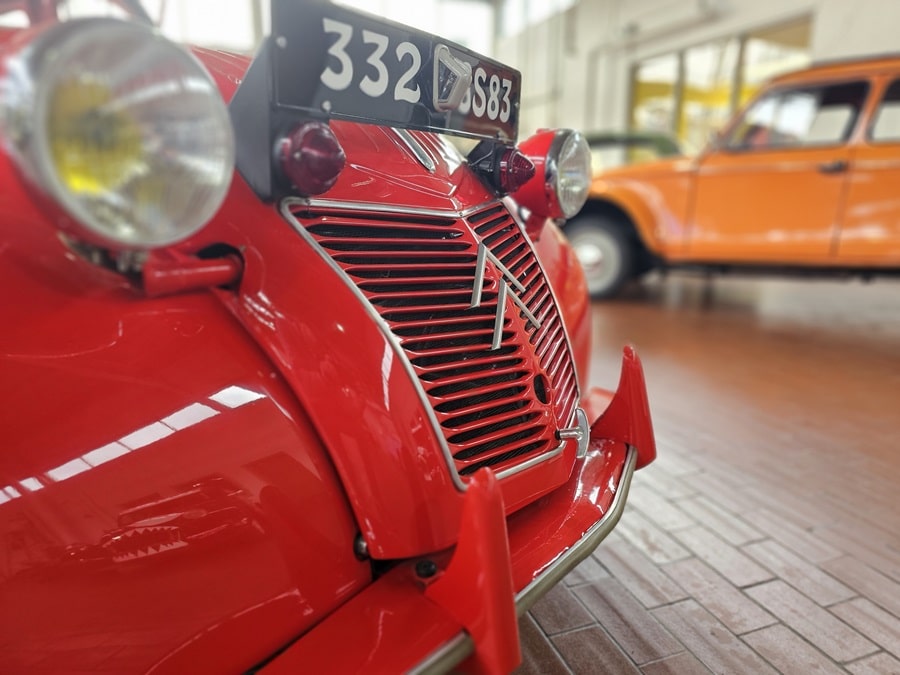
C’est la Vie en 2CV
On Display Now Through March 9th, 2026
The Citroën 2CV, or Deux Chevaux (meaning “two horses”), is one of the most historically important automobiles in French history. The project began after the bankrupt Citroën company came under the ownership of Michelin (the French tire manufacturer) in 1934. A survey conducted by the new management revealed that most rural French citizens still did not own cars. A brief was put together to create a prototype TPV, or Toute Petite Voiture (Very Small Car) under complete secrecy in Michelin facilities. The TPV needed to enable four people to transport 50 kg (110 lbs.) of farm goods to market at 50 km/h (30 mph), if necessary, across muddy, unpaved roads. In fuel economy, the car would use no more than 3 L/100 km (95 mpg imp; 80 mpg US). One design parameter required that customers be able to transport eggs across a freshly ploughed field without breakage. The small car would be unveiled at the Paris Salon on October 7th, 1948, and was produced from 1949 until 1991. The 2CV became one of the most popular cars in France and even had numerous variants created due to its simple construction. This exhibition explores the significant history of the 2CV, the dynamic life of its production, and its impact of French society.
